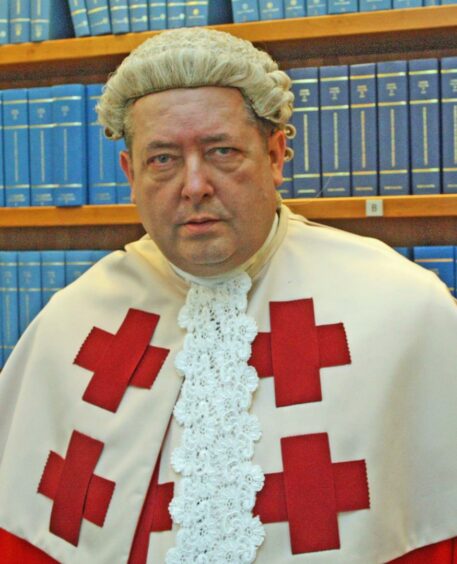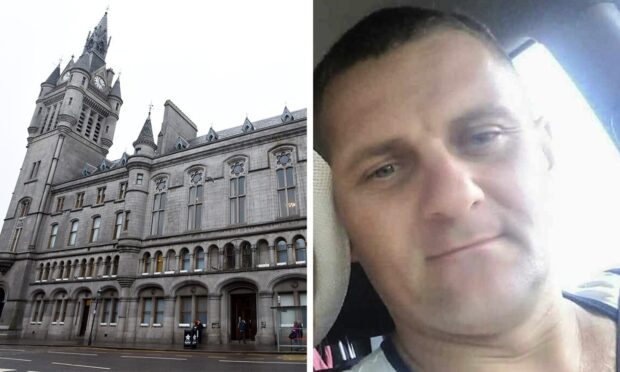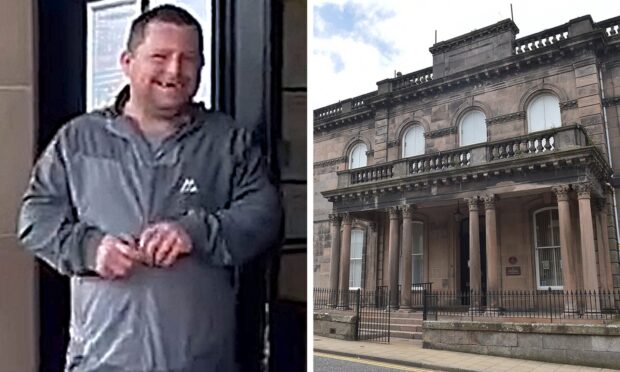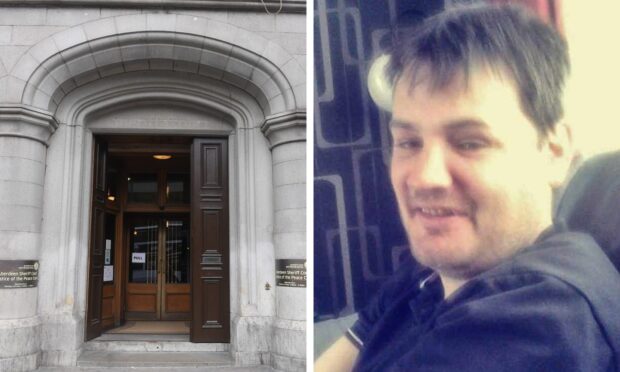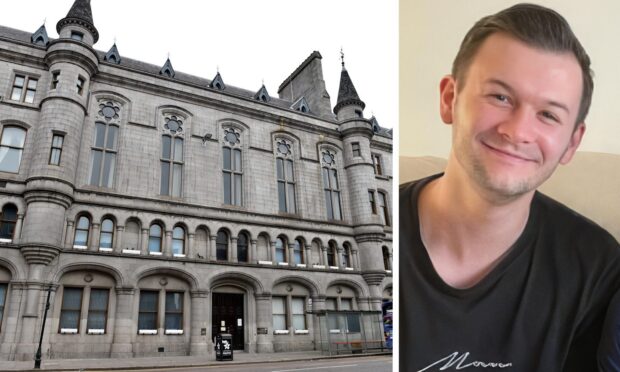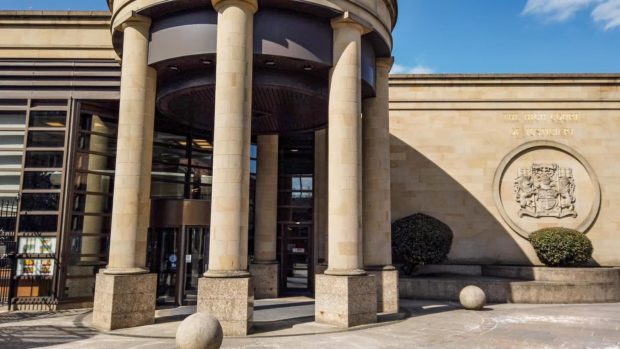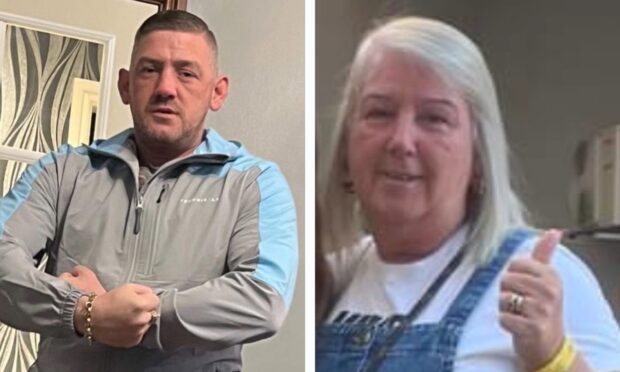A prosecutor has urged jurors to convict an Aberdeen man accused of terrorism, telling them the evidence shows he was acquiring “information and materials” to build homemade explosives.
Liam Ewing QC told the jury that they should conclude that 29-year-old Richard Smith was planning to commit acts of terror.
Mr Ewing told the High Court in Edinburgh on Friday that Smith collected information from the internet that allowed him to make explosive substances.
And Mr Ewing said that Smith also made searches on how to make explosive devices.
The advocate depute said the accused’s desire to make these appliances were caused by him having “deeply entrenched” racist views.
Mr Ewing said: “He had chemicals in his possession for something other than a lawful purpose.
“He was making preparations for terrorist attacks. He made searches online for ‘mail box explosions – how to do it’ and ‘Middle East bomb designs’.
“The conclusion you show draw is that he was acquiring information and material to build IEDs. That is the conclusion you should draw.”
Breaking terrorism and explosives laws
Mr Ewing was addressing jurors with his closing speech during proceedings against Smith, of King Street, Aberdeen.
He is standing trial on charges of breaching terrorism and explosives legislation.
On Friday, Mr Ewing said that police examined several IT devices which belonged to Smith.
He said that officers found that he had been making online searches on how to use chemicals to make explosive substances.
Mr Ewing also said that some of the searches on how to make use explosive substances.
The solicitor advocate also told jurors that Smith downloaded PDF files from the internet on subjects like how a US government agency detect letter bombs.
The advocate depute told the jury that the files Smith downloaded formed a “library” which he consulted whilst he made “preparations for a terrorist attack”.
The lawyer also said that when police searched Smith’s home in King Street, Aberdeen, they found ‘black powder’ – another name for gun powder – and other flash powders.
Mr Ewing said that Smith made these substances at home using chemicals and that they could be used in explosive devices.
Racist views
Making reference to a police interview which the accused gave shortly after being detained by police, Mr Ewing said: “It completely undermines what he said to the police about making things like mouthwash.
“He used Iodine to make high explosive.”
Mr Ewing also told the court that examination of Smith’s IT devices revealed literature associated with extreme right-wing politics.
He said that Smith’s actions in the time before he was detained show that he had racist views.
Mr Ewing said Smith sent his uncle a text which stated “The Muslims must die” and that he had sent another friend a message saying “Christians are doomed”.
Mr Ewing said the jury heard evidence that Smith didn’t like “non-white” people.
Making reference to evidence given by a friend of Smith’s about the accused’s behaviour, Mr Ewing added: “He said ‘I would join the fight against immigration.’
“He would regularly abuse people in the street. He would tell them to go back to their own country.”
Mr Ewing added: “I would not say that’s not someone who has strong views against immigration. It’s suggestive of somebody with strongly racist views”.
Mr Ewing urged jurors to convict Smith. He said: “He is a man of deeply entrenched racist views. I submit that it is these views that provided the motivation for him”.
‘He simply had an interest in chemistry’
Defence advocate Ronnie Renucci QC told the jury that the Crown hadn’t proven the case against his client beyond a reasonable doubt.
He said his client had an interest in learning about new things. Mr Renucci added: “He simply had an interest in chemistry in learning about it and finding out about it”.
Mr Renucci said Smith had Asperger’s Syndrome and that this meant that he focused on subjects like chemistry in a different way from people without autism.
He pointed to information given by Smith to police about how he liked to learn about things and the documents he downloaded were “open source” material from the internet.
Speaking about his client’s political views, Mr Renucci said: “These were racist. These were reprehensible. These were odious”.
But Mr Renucci said the explosive substances made by Smith were very low in quantity and could not be used in a terror attack.
He added: “This was no bomb-making factory”.
Mr Renucci said the Crown case about Smith planning terrorism attacks was incorrect and that the jury should acquit him.
He added: “He is not some lone wolf terrorist operating out of his bedsit in Aberdeen. He has Asperger’s. He has autism. He may be somewhat lonely.
“He may have poor communication skills. He may appear to be a bit pathetic. But he is not a terrorist. I would ask you not to put two and two together and get five.”
Prosecutors claim that between October 19 2018 and November 13 2019 at various locations in Aberdeen, Smith “did make” or “knowingly” had in his possession “explosive substances”.
Prosecutors claim that these were “namely homemade explosive substances” and powders and chemicals, which could be used to make “explosive substances”.
It’s alleged that the substances could “cause or aid in causing an explosion”.
In relation to this charge, the Crown claims that Smith breached the Explosive Substances Act 1883.
The second charge alleges that between August 9 in 2018 and November 13 in 2019 at various locations in Scotland, Smith collected or made a “record of information of a kind likely to be useful to a person committing or preparing an act of terrorism”.
Prosecutors say he also conducted online research into the “manufacture of explosive substances, improvised detonators and improvised explosive devices”; and that he possessed weapons – and that this was contrary to the Terrorism Act 2006 section 5 (1a).
Smith has pleaded not guilty to the charges and the trial will continue on Monday, when judge Lord Mulholland gives his final legal directions to jurors.
For all the latest court cases in Aberdeen and the latest crime and breaking incidents, join our new Facebook group.

